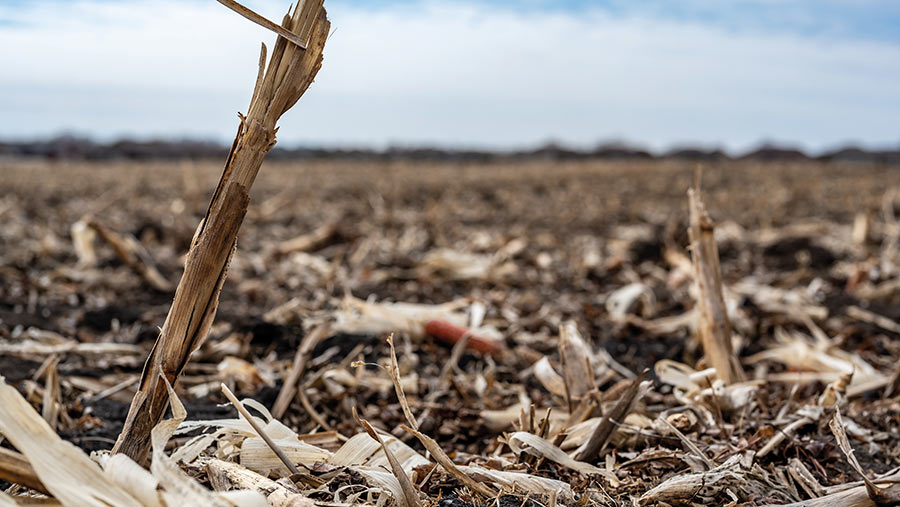5 steps to an integrated approach for tackling fusarium in wheat
 © Lost in the Midwest/Adobe Stock
© Lost in the Midwest/Adobe Stock Fusarium head blight can be a costly problem in wheat crops when millers reject loads that exceed mycotoxin limits, but farmers can reduce this risk.
Head blight is a complex disease caused by five commonly found species, including Fusarium graminearum and F culmorum, which can lead to the production of mycotoxins.
See also: Grower returns to milling wheat with low fertiliser needs
While weather during flowering is a key risk factor, work carried at Harper Adams University has identified five steps that farmers can take as part of an integrated approach in wheat crops.
1. Good rotation – avoid maize as previous crop
Simon Edwards, professor of plant pathology at harper Adams University, points to a trial investigating the effect of cultivation intensity and previous crop.
It shows a big risk factor is wheat following maize in the rotation in a min-till system.
Maize is a host of Fusarium graminearum, which produces the mycotoxin deoxynivalenol (DON). Consequently, levels in the following wheat grain can be higher in a min-till situation.
The type of maize is also a factor. “Grain maize is worse than forage maize, perhaps due to there being more crop debris.”
There were also elevated levels of DON in wheat following sugar beet and grassland in a min-till system, although not at the same magnitude as maize.
2. Intense cultivation following a high-risk crop
Prof Edwards explains that crop debris is thought to be the key source of inoculum, and burying trash can be effective in reducing the risk.
Other work shows stepwise reductions in DON levels as cultivations intensified from direct-drilling to chopping and ploughing.
“The more intense the cultivation, the greater the reduction in risk. Chopping and mixing with soil sees faster breakdown of debris.”
Consequently, direct-drilling after grain maize is the highest risk.
However, he acknowledges that increasing cultivation conflicts with the move to direct-drilling and regenerative farming practices.
3. Fusarium-resistant varieties
Prof Edwards says there is little range in UK varieties, and they are classed as susceptible compared with that seen in other countries.
Current varieties have scores of 5, 6 and 7 on the current Recommended List.
Fusarium resistance is polygenic, so it won’t be easy to bring resistance into UK breeding material. Breeding is, therefore, a long-term strategy, he says.
4. Use a robust rate of a fusarium active fungicide
A key part of managing fusarium is the T3 ear spray, which is aimed at preventing the disease in the ear. Azoles have proved effective (prothioconazole, metconazole and tebuconazole).
However, work at Harper has shown that timing is crucial and early applications are better. He recommends going at growth stage 59 and at a robust rate.
A new SDHI (pydiflumetofen), which is not yet registered in the UK, is showing good control of fusarium – the first SDHI to show efficacy on the disease, he says.
It may become a future part of the integrated strategy when used at the T2 (growth stage 39) timing.
5. Timely harvest
Prof Edwards highlights survey data showing increased risk of mycotoxins as harvest is delayed, particularly with another key mycotoxin, zearalenone (ZON).
As harvest gets later, levels of DON tend to start tailing off, but ZON increases.
“You see little ZON production until the crop starts to senesce, then levels increase during the ripening stage. So with delayed harvest, levels keep going up.”
Trials irrigating crops to simulate a wet harvest and with a covered area to keep it dry suggest that moisture is needed for ZON production.
Simon Edwards was speaking at the recent British Crop Production Council’s (BCPC) Diseases Review 2022, held at Niab in Cambridge. BCPC is a charity that promotes the use of science and technology for effective and sustainable crop production

